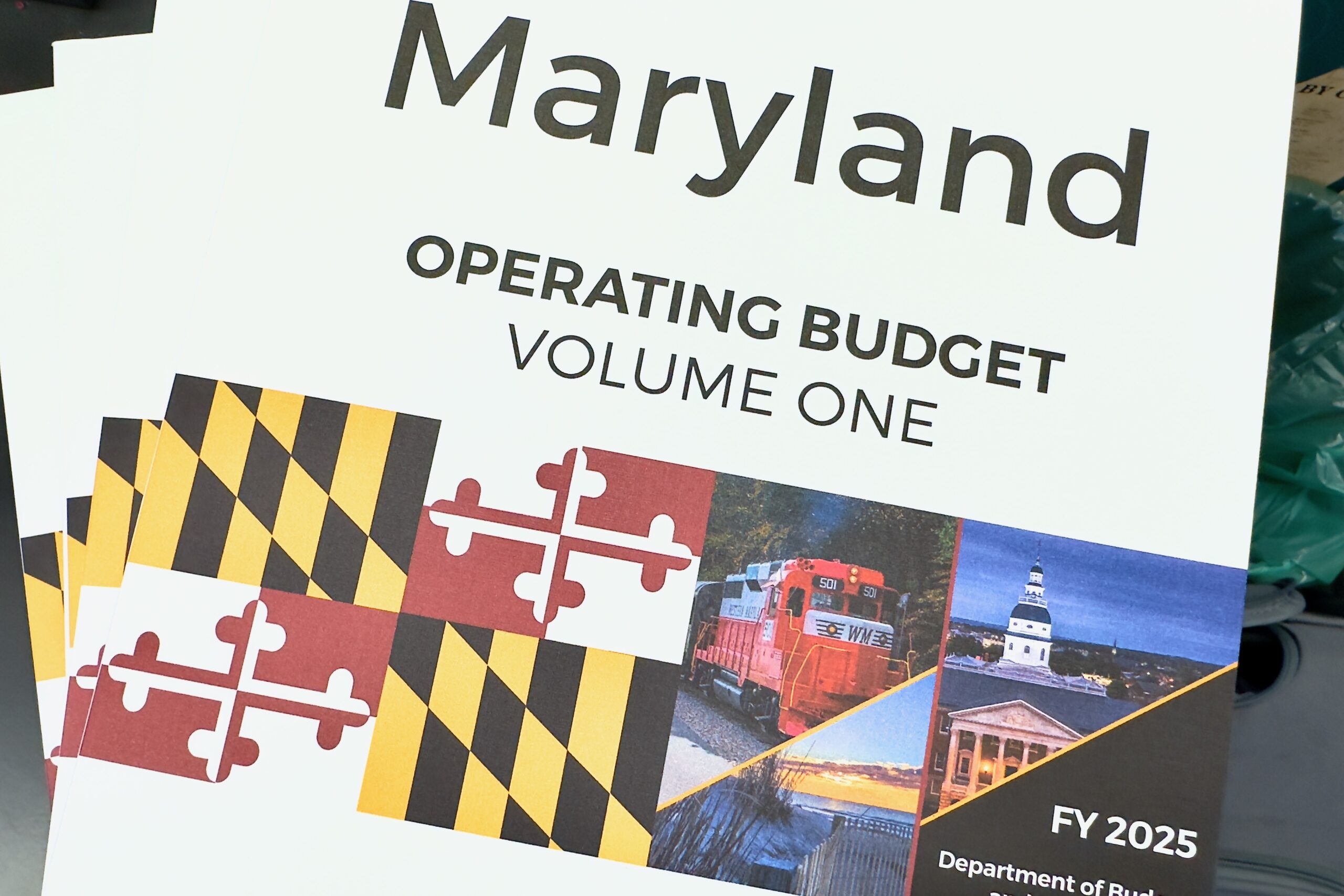Education Dept. Responds to Senator: State Is Working ‘Closely and Collaboratively’ With Local Schools
Maryland Sen. Katie Fry Hester received this response to her letter, “MSDE, Do More to Support Local School Districts During Pandemic,” [Maryland Matters, Oct. 19].
Dear Senator Hester:
Thank you for your correspondence regarding the reopening of schools. Both the Maryland State Board of Education and Maryland State Department of Education appreciate your input as we continue to work through one of the most difficult times in the history of our country and state.
The State Board and the MSDE have made it very clear that local school systems (LSSs) should make every effort to bring as many students back into a safe classroom environment as soon as possible. Since the beginning of the pandemic, both entities have worked closely and collaboratively with every LSS and provided them with necessary resources, guidance and technical assistance.
MSDE and the State Board have also sought at every critical juncture of the pandemic recovery to respect the LSSs authority regarding the reopening of schools. Ultimately, these decisions lie with the local superintendent and local boards of education.
In regards to the requests and suggestions outlined in your correspondence, we will address each chronologically as they are outlined in the letter.
Remove the Synchronous Learning Requirement Passed by the State Board
The State Board of Education voted on September 1, 2020, to require that schools must provide at least an average of 3.5 hours of synchronous instruction across the grades (K through 12) spread out over the course of the day. As stated in State law, all schools must provide a program for 180 days a year and include at least a total of six hours per day. MSDE will work with school systems to meet those levels by the end of the calendar year. The State Board is also encouraging school systems to reconsider their mode of instruction at the end of the first marking period.
Both the State Board and MSDE feel strongly that while any LSSs remain in a virtual or hybrid learning model that all children in Maryland should be receiving a certain degree of face-to-face, synchronous instruction with a teacher in a learning environment each day. The requirement outlines that the 3.5 hours must only be an average and spread across all grades each day. This allows the LSSs significant flexibility in their ability to develop schedules around what is appropriate for particular grade levels of students and for the learning model in their jurisdiction.
Increase Funding for Systems Due to Decreased Enrollment
The development of the State’s budget is subject to executive privilege. However, MSDE is always supportive of additional funding to aid our local school systems.
Use State Purchasing Power for PPE
LSSs received more than $400 million from the federal CARES Act and $10 million in grant funding is available specifically for the purpose of assisting LSSs as they return students to school for in-person instruction.
In addition, MSDE has worked closely with the Maryland Emergency Management Agency and other state agency partners to distribute over 570,000 masks, 162,000 gloves, 17,500 gowns, and 10,500 face shields to LSSs.
The State Board and MSDE continue to work with all partners to ensure LSSs have the resources and supplies necessary to maintain a safe environment upon the return of students and staff to school buildings, and are currently working with MEMA on the provision of additional masks to local school systems.
Page 48 of the Maryland Together: Recovery Plan for Education clearly outlines the necessary PPE that should be maintained in a health suite within a school. Additionally, on August 4, 2020, Guidance for Use of Cloth Face Coverings in Schools was updated, distributed, and posted on the MSDE website. This document requires the use of face coverings in school buildings.
To date, no local school system has cited PPE as an obstacle to re-opening school buildings.
Create an Online Dashboard to Track COVID Cases in the K-12 System
The State Board has been working collaboratively with MSDE to develop and update a dashboard that tracks a number of critical metrics that will be shared publicly and includes the infection rate in each respective jurisdiction. Specific metrics to follow will be discussed at the October State Board meeting.
Set Statewide Guidance for School Transportation
As you note in your correspondence, the Maryland Together: Recovery Plan for Education lays out health and safety guidelines for the safe transportation of students to school. It is inaccurate that the plan does not identify the recommended capacity for students on a school bus. Centers for Disease Control (CDC) guidance recommends one child to a seat on a school bus with alternating rows. The transportation guidance is specifically designed to acknowledge that LSSs have varying needs and will need to determine how to implement the guidance given those needs.
Furthermore, the Office of Pupil Transportation and Emergency Services at MSDE continues to meet and communicate regularly with local directors of transportation to provide technical assistance and guidance.
Provide Clear and Detailed Metrics for School Openings and Closings
The Maryland Department of Health, in consultation with MSDE, posted guidance titled, “Response to a Laboratory Confirmed Case of COVID-19 and Persons with COVID-19-like Illness in Schools” on July 23, 2020. In addition, comprehensive metrics were provided on page two of the joint guidance issued by MSDE and MDH on August 27, 2020, COVID-19 Guidance for Maryland Schools.
The guidance identifies the requirements in each jurisdiction for the safe return of students to classrooms and which mode of instruction is appropriate given the positivity rate and new case rate per 100,000 individuals. For example, a jurisdiction with a positivity rate that is less than 5 percent and is experiencing less than five cases per 100,000 residents would be able to expand in-person programs. The document also outlines the exclusion, isolation, quarantine, communication, and notification processes that must be followed given the confirmation of a COVID-19 case in a school.
Improve School Cybersecurity
MSDE’s Chief Information Officer (CIO) has been collaborating with the chairs of Technology Leadership Forum (TLF) to discuss data governance and cybersecurity since August 2019. The TLF is a group of local school system CIOs led by Carroll and Frederick County. To support this effort, MSDE hired its first Security Officer in 2020 and the Department is currently in the process of determining the leadership role MSDE can play in providing LSSs needed best practices and tools to harden existing security postures as they relate to sensitive data.
Ensuring Students Have Sufficient Access to Meals
We agree that providing meals to students in need is critically important and the provision of meals has continued throughout the pandemic. Since the initial closure of schools on March 16, 2020, our child nutrition teams from all local school systems have provided more than 24 million meals to children in Maryland. As school systems meet the challenge of educating our students in a variety of settings, food service workers continue to meet the challenge of preparing nutritious meals for students. This includes students who are learning at home.
This is facilitated through curbside pick-up, the ability of parents or caretakers to pick up meals, and even meal delivery using school buses.
This effort continues to be possible through national and State waivers that allow flexibilities in what is ordinarily a complex set of federal requirements to ensure quality nutrition and fiscal integrity in the child nutrition program. One of the most impactful of these waivers was to relax the requirement for congregate feeding. Since reopening, roughly 30 national and State waivers have been implemented or extended. On October 9, 2020, the U.S. Department of Agriculture (USDA) extended flexibilities to allow free meals to continue to be available to all children throughout the entire 2020-2021 school year.
Although food service operations have been altered in many ways during the pandemic, our local school systems and our school meal teams are still fulfilling the mission to ensure students are healthy and ready to learn.
Partner to Close the Digital Divide
The State Board and MSDE understand that connectivity remains a challenge for certain areas of the State at this moment. With funding from the CARES Act, the Governor’s Office of Rural Broadband offered grants to increase internet access for Maryland public school students. MSDE continues to work with the Office of Rural Broadband on this initiative.
This initiative is being led by the Maryland Department of Housing and Community Development. Funding will also support feasibility studies and design for a statewide fixed wireless network to further expand access for unserved students in rural areas. The Governor’s Office of Rural Broadband will work with local partners to incorporate existing vertical assets, such as communications towers and water towers, as part of the network infrastructure. This network is expected to be operational by the beginning of the 2021-2022 school year.
Make Plans for Bridging Gaps in 2021
MSDE has already allocated $100 million from the CARES Act Coronavirus Relief Fund to local school systems to support tutoring and other supplemental services to compensate for the learning loss associated with time away from direct instruction as a result of the COVID-19 school closures. In addition, MSDE and the State Board are already developing plans to work with LSSs and key stakeholders to accelerate learning next school year.
Set Standards for IEPs and Support Services for Students with Disabilities
The Maryland Together: Recovery Plan for Education requires LSSs to follow the Individuals with Disabilities Education Act (IDEA) Section 504 of the Rehabilitation Act (Section 504), and Title II of the Americans with Disabilities Act (ADA). Both MSDE and the State Board have, and will continue to, strongly encourage school systems to prioritize bringing groups of students with disabilities back into classrooms, and some have done so with success. The MSDE Division of Early Intervention and Special Education Services has been working closely with local school systems since the initial closure of school buildings in March 2020 to ensure continued support for the education of students with disabilities and compliance with applicable federal and state laws. In an effort to provide clear guidance, over the past six months, the Division has released a series of Technical Assistance Bulletins, as well as several supplemental guidance documents.
Utilize Support Staff Effectively
Each LSS must make decisions on how to effectively utilize support staff in their schools depending on the needs of that system.
Provide Adequate Mental Health and Well-Being Support for Students and Staff
The State Board and MSDE are extremely mindful of the increased and varied needs of staff and students at this time and are working closely with all local Directors of Students Services to identify and customize supports across the State. Multiple methods are being used to ensure system and school leaders are planning for the increased mental and behavioral needs of staff and students now and upon the return of students to the school building.

Clarence C. Crawford, left, Jean Halle and Karen B. Salmon
These methods currently include a resource document, direct instruction, system-specific coaching, and collaborative learning communities. The MSDE seeks to increase local personnel’s ability to provide instruction to system staff in practices related to mental health, trauma, social and emotional learning, and restorative approaches, through train the trainer programs as well as direct instruction.
In addition, the Maryland Center for School Safety holds monthly meetings with school system mental health coordinators to understand and address major issues at the school level and MSDE staff meet weekly with Directors of Student Services. Staff also meet regularly with Coordinators of School Counseling, School Nurses, and School Psychologists.
Track Student Progress in Multiple Areas
The State Board and MSDE continue to review reopening plans from local school systems and will be monitoring and evaluating these plans as they are implemented in coming weeks and months. At the State Board’s October meeting, MSDE will review first-term performance metrics that were shared with the State Board at the September 22, 2020, meeting to ascertain the efficacy of plan implementation in every school system. MSDE is conducting training sessions with local school system Assistant Superintendents and Accountability Coordinators on how to collect and report that data are being conducted this month.
Additionally, requirement #4 of the Maryland Together: Maryland’s Recovery Plan for Education required that LSSs administer diagnostic assessments. The requirement states that early in the school year, schools must determine where their students are instructionally, identify the gaps in learning, and prepare a path for instructional success and recovery. This will assist LSSs in determining learning gaps that have developed due to the pandemic. The diagnostic assessments are to be based on established State academic standards.
Embrace Online Learning
Since the move to virtual learning in March, MSDE has worked very hard to bolster online learning opportunities for students alongside LSSs. MSDE has offered the use of the State learning management system (LMS) to LSSs. However, all LSSs have contracted or have been in contract with specific LMS vendors and provided training specific to each platform.
MSDE and the State Board had launched a digital learning initiative prior to the pandemic to consider myriad ways to improve learning in an online environment in Maryland, and their work is ongoing. Recommendations from that initiative are forthcoming. Simultaneously, MSDE is working with LSSs to create a digital learning consortium for future use.
It is important to note that MSDE is expanding online course offerings for students and educators to address both the social emotional needs of school communities and curriculum alignment.
Support Professional Development for Teachers
MSDE provided extensive professional learning during the spring and summer of 2020. Local school systems offered 2,936 professional learning opportunities for 203,134 participants. Additionally, 433 educators participated in the “Online Teaching in Maryland” program, 638 educators participated in the Friday Institute for Education Innovation’s (North Carolina State University) “Teaching Remotely” course, and 370 educators participated in the International Society for Technical Education Summer Program. Differentiated professional learning opportunities will continue during this school year and beyond to meet the needs of Maryland educators.
Set Online Education Standards
With the understanding that the virtual environment presents its own set of challenges for meeting established standards, MSDE hosts biweekly meetings with statewide LSS instructional technology liaisons to share and discuss best practices, issues, and innovative ideas. This includes collaboration with other states to gain insight into what is being done across the country.
Virtual learning opportunities have improved substantially since the spring due to enhanced professional development opportunities for teachers and administrators, as well as additional resources available to improve the experience for students and staff.
All school systems in Maryland must continue to meet statewide academic content standards, and there is no fundamental change in the requirement that each LSS develops any curriculum to align with Maryland content standards. Requirement #10 in the Maryland Together: Recovery Plan for Education outlines that local school systems must consider virtual platforms that allow for management and tracking of attendance. Local school systems utilize various platforms to track and manage attendance.
The State Board and MSDE appreciate your continued support of Maryland’s students.
–CLARENCE C. CRAWFORD, JEAN HALLE AND KAREN B. SALMON
The writers are, respectively, president of the Maryland State Board of Education, vice president of the MSBE and state superintendent of schools.




 Creative Commons Attribution
Creative Commons Attribution